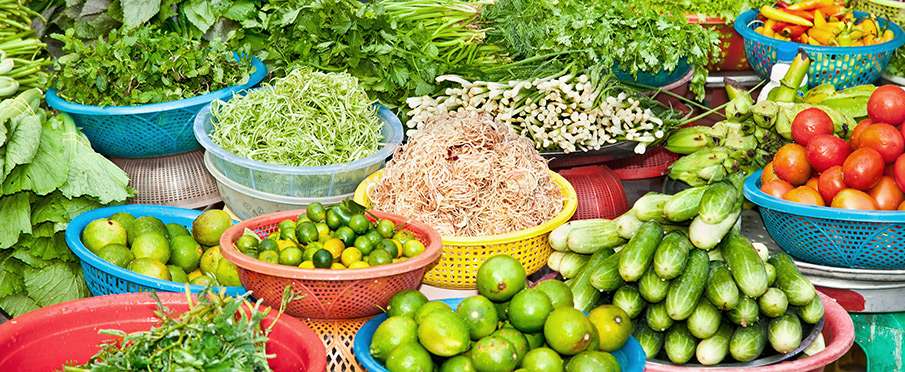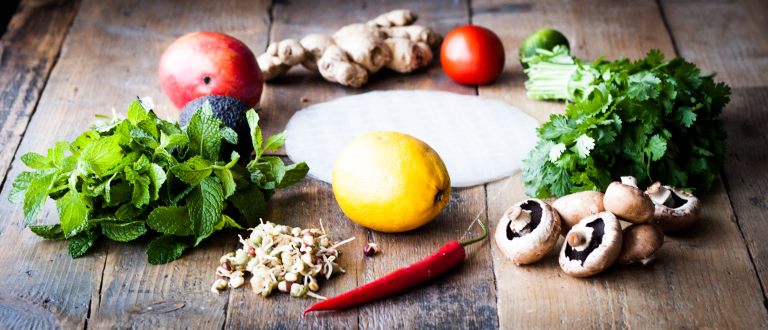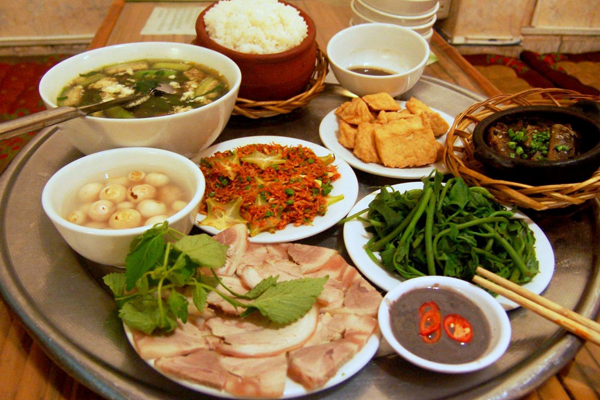Vietnam has a diverse range of agricultural products. It is this diversity and variety that makes their food healthy and balanced. Dishes and ingredients used in Vietnamese cuisine can cover all the dietary needs on protein, lipids, vitamins, carbohydrates and minerals. In addition, the culture of eating multiple dishes and chewing slowly improves digestion and assimilation of nutrients, without overloading the digestive system.
However, the eating habits of Vietnamese have changed recently due to economic growth and availability of more and more processed food, loaded with added sugar, sodium, and fat. This is the reason why the number of Vietnamese people with cardiovascular diseases and metabolic disorders, obesity, cancers, has considerably increased. Also, the increased consumption of alcohol among men results in the increasing number of liver and digestive system cancers.
Therefore, the reputation of Vietnamese food as healthy is only true to traditional diet when rice is the staple of the diet and cooking methods often involve steaming or stir-frying. 2 out of 3 meals of the day often consist of steamed rice with side dishes of vegetables, meat, fish or tofu. Their favourite breakfast contains usually rice-based food such as noodle soups, sticky rice, steamed rice rolls, porridge… Pork and meat are the most common protein in the Vietnamese diet. They are cooked in a lot of ways: fried, sauteed, steamed… A common Vietnamese meal has at least 4 side dishes: 1 vegetable dish, 2 salty dishes and 1 kind of soup. The most used condiment is nước mắm (fish sauce) made from fermenting fish. It is the staple ingredient for seasoning in Vietnamese cuisine. In order to add aroma, flavour and colour to their dishes, Vietnamese people often use herbs as integral ingredients. When you order a Vietnamese dish, especially noodle soups like phở, bún riêu, hủ tiếu… your dish always comes with a basket of aromatic plants and vegetables. In terms of nutrients, the herbs contain many vitamins and antioxidants which can promote general health and slow the development of several age-related diseases. The most frequently used herbs are coriander, Thai basil, lemongrass, sawtooth, spearmint, peppermint…
Despite the fact that Vietnamese food is naturally healthy, nutrient, and full of flavours, the trend is towards artificial-tasted, industrially processed and lack of nutrient-enriched food. Pay attention to where you eat and the ingredients used in the preparation of the dishes. A bowl of phở is healthy because natural ingredients are used, yet, the nutrient might be reduced if the restaurants use food enhancers.
VIETNAMESE EATING HABITS
- Breakfast, lunch, and dinner are the only meals in Vietnam.
- Vietnamese people have breakfasts by 9 am and they prefer it completely salty.
- Lunch is a quick but nutritive meal which usually has to be eaten between 12-1 pm
- The main meal in Vietnam is dinner with the attendance of the whole family. Dinner time is after 6 pm and before 8 pm.
- Not all of the families in Vietnam have a dining table.
- Vietnamese like watching the news on TV in their mealtime
- Except for rice served in single bowls, the other dishes are placed on separate plates. People share food together.
- The middle-aged like to drink tea after meals.
- Young family usually dine out at weekends.



Thanks for sharing such an amazing & informative blog which will surely be a big help to those travelling to the vietnam so that they’ll get a good idea about the food habits in vietnam. There are many amazing places to visit and out of many the beach resorts in the southern part of the country is very popular among the tourists.There one can find many beautiful beach resorts which provides top class hospitality